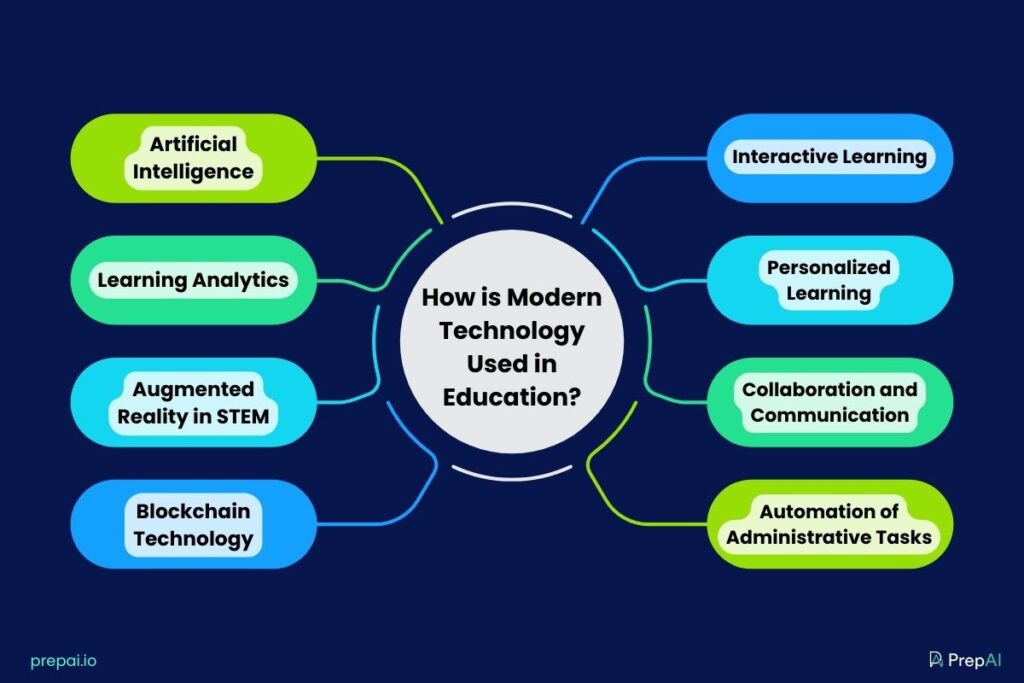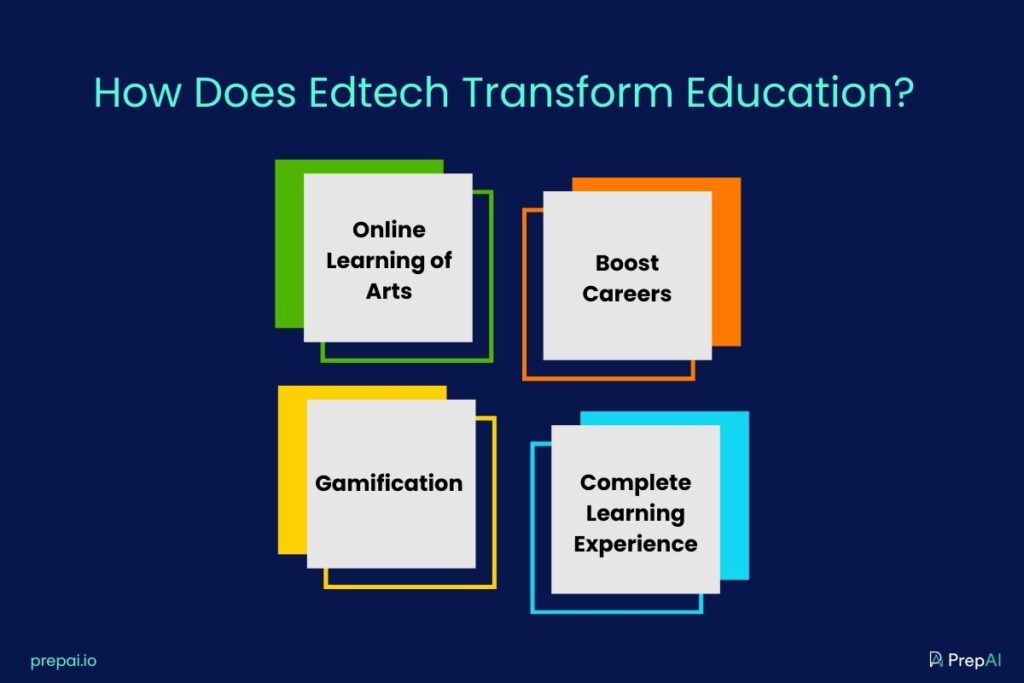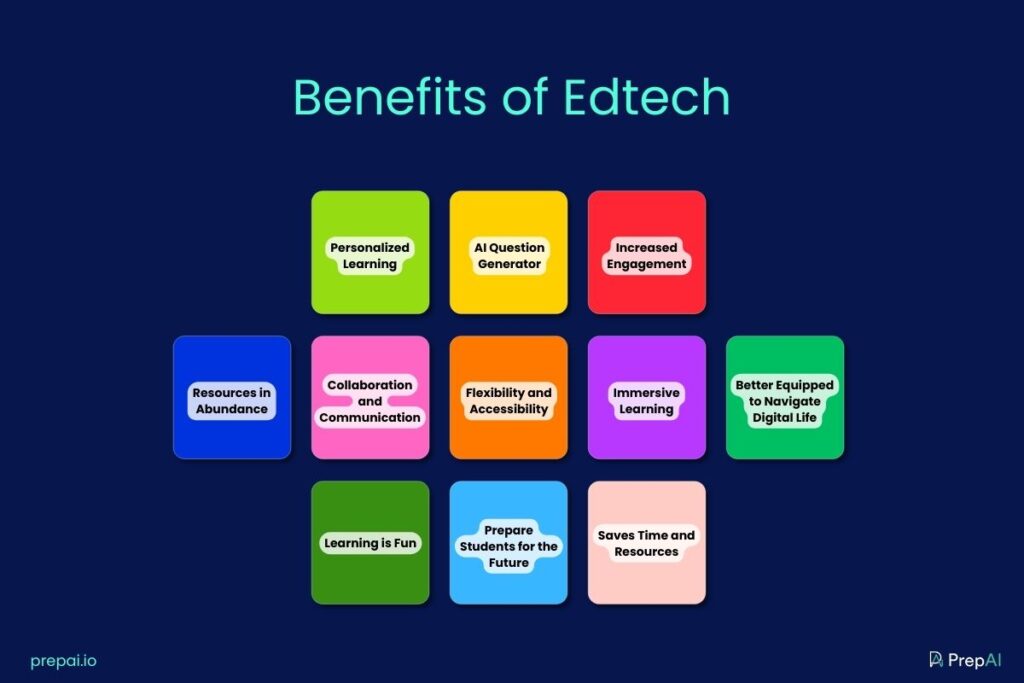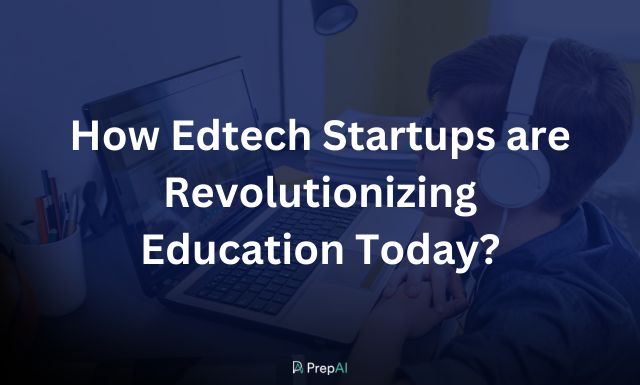Edtech startups are changing the way the world perceives education. Technology is fast becoming an intrinsic part of training and education. This blog summarizes how modern technology is used in education and what advantages it offers to the students, teachers, and administrators alike.
Remember how we were taught at school on a black/ green board and textbooks? The Internet was limited for research work, that too with the first preference given to the books at the library. But today, kids attend online classes. They learn from apps, search for everything on the internet, and pretty much have access to unlimited information.
To say technology has changed the outlook of the educational sector wouldn’t be wrong. The spread of the Covid-19 pandemic in 2020 and the subsequent lockdowns/restrictions have boosted the use of technology for education. Edtech makes it possible for students from rural and remote regions to continue their education using eLearning apps. Edtech startups play a crucial role in revolutionizing education.
The global Edtech market was estimated at $89.49 billion in 2020. It’s expected to grow at a CAGR (Compound Annual Growth Rate) of 19.9% from 2021 to 2028. With AI, ML, gamification, etc. making rapid advances in education, we can expect new developments to be rolled out regularly in the near future.
What is EdTech?
Simply put, Edtech is educational technology, the process of using technology to provide education and help educators streamline their work. Concepts like artificial intelligence, machine learning, virtual reality, and augmented reality are used in teaching and non-teaching processes.
How is Modern Technology Used in Education?
Modern technology has significantly transformed education in various ways, enhancing both teaching and learning experiences. The following are some key examples of how modern technology is applied in education:

1. Artificial Intelligence
AI is used for the personalization of courses to suit individual student needs, automating recurring tasks for teachers and administrative staff, and preparing assessments through NLP-based question generation platforms. This allows for tailored learning experiences and frees up time for educators to focus on more engaging instruction.
2. Learning Analytics
Although still evolving, learning analytics is being used in online certification programs. It can recommend courses based on a student’s existing syllabus, learning abilities, and areas of interest. This technology helps institutions track and improve student performance by analyzing learning data.
3. Augmented Reality in STEM
AR tools are increasingly being used to teach STEM (Science, Technology, Engineering, and Mathematics) subjects, providing students with immersive, interactive experiences. These affordable tools help clarify complex concepts and strengthen foundational knowledge.
4. Blockchain Technology
MOOCs (Massive Open Online Courses) have begun using blockchain technology to enhance data security and verify students’ skill levels, ensuring that academic credentials are both secure and verifiable.
5. Interactive Learning
Interactive tools such as whiteboards, educational apps, and online platforms are making learning more engaging. Virtual reality (VR) enhances this further by creating immersive environments, like historical site explorations or virtual science experiments.
6. Personalized Learning
Adaptive learning technologies utilize algorithms to adjust content and pace according to individual student needs. This helps cater to diverse learning styles and abilities, providing a more customized educational experience.
7. Collaboration and Communication
Technology facilitates collaboration through platforms like Google Docs, wikis, and video conferencing, allowing students to work together on projects, even if they are in different locations.
8. Automation of Administrative Tasks
AI can automate various administrative tasks, such as grading, attendance tracking, and lesson planning, giving educators more time to focus on interacting with students.
How Does Edtech Transform Education?
The main purpose of Edtech has been to simplify the learning process, facilitate inclusive learning and make the educational system more efficient. It helps bridge the gap between teaching and understanding and creates a cohesive learning environment.

Online Learning of Arts
Be it the BandBlast free app by Music Lifeboat or the CreatorUp Company that’s teaching people how to become a videographer, online learning is taking over the art facilities as well. Many freelance dance and music teachers provide online classes to students from other locations.
Boost Careers
Edtech startups provide students with an opportunity to access resources that’ll help them excel at studies and develop their personalities. The combination of high-quality education and personality development will give them equal opportunities in the competitive world and become successful in their choice of careers.
Gamification
Gamification is not a new trend but is fast becoming a popular one in the market. Microlearning is possible through gamification. The process of using the concepts behind games to promote user engagement is known as gamification. It’s used in digital marketing and education to retain the user’s interest and explain things attractively and uniquely. While gamification is currently used to teach kids aged 5-8 years, it’s also used to train teens and adults. eLearning apps such as Duolingo and Babbel are perfect examples of gamification in education.
Complete Learning Experience
Education is not limited to a subject or a class. It encompasses a whole lot of attributes that inspire students to become better and successful individuals. Technology helps teachers instill a range of skills in students and help them give back to the community. For example, LA Makerspace teaches rubric STEM skills to disadvantaged youth and helps them with holistic development, which is not possible with regular teaching facilities.
What are the Benefits of Edtech?
EdTech startups provide various advantages to educators and training institutions, showcasing how technology can enhance the delivery of education and training. The following are some of the key benefits of educational technology:

1. Personalized Learning
EdTech enables tailored educational experiences for students, allowing them to learn at their own pace and in a style that suits them best. Platforms use data collected from students’ assignments to adjust and improve teaching modules. For instance, eLearning platforms allow students to watch tutorial videos multiple times and directly ask questions via apps, promoting a deeper understanding of the material.
2. AI Question Generator
One of the notable innovations in EdTech is AI-based platforms like PrepAI, which use machine learning and natural language processing to generate questions in multiple formats. Teachers can customize these questions, adjust the order, and even conduct tests for multiple candidates simultaneously. PrepAI also offers self-assessment tools for students, enabling them to take practice tests, get auto-graded results, and identify areas for improvement.
3. Increased Engagement
EdTech tools, such as interactive multimedia and AI-driven learning platforms, create engaging experiences for students. Immersive learning technologies like augmented reality (AR) and virtual reality (VR) allow students to feel as if they are experiencing the topic first-hand. For example, 3D simulations can bring complex scientific concepts, like molecular structures, to life, helping students retain information more effectively.
4. Resources in Abundance
Technology brings an abundance of resources closer to both teachers and students. Access to research papers, online lectures, webinars, and guest blogs enhances the quality of education. This wealth of information supports deeper learning and enables students to make their assignments stand out with well-researched content.
5. Collaboration and Communication
EdTech facilitates collaboration between students, even across different geographical locations. Tools like online platforms and apps make group work more convenient, allowing students to share information and complete projects without having to meet in person.
6. Flexibility and Accessibility
Digital learning platforms provide flexibility, allowing students to access educational materials from any location. This is especially beneficial for students with disabilities or those in remote areas. By offering a range of tools and formats, EdTech ensures education is more accessible to a broader audience.
7. Immersive Learning
Immersive learning is gaining popularity for its ability to capture students’ attention. By using AR and VR, students can virtually experience scenarios, making learning more interactive and memorable. For example, 3D simulators allow students to interact with molecules, enhancing their grasp of scientific concepts.
8. Better Equipped to Navigate Digital Life
By introducing technology in classrooms, educators can teach students how to navigate the internet safely, maintain digital privacy, and distinguish between credible and misleading information. This prepares students for the digital world they will encounter beyond school.
9. Learning is Fun
As technology becomes an integral part of daily life, traditional teaching methods may seem less engaging to students. EdTech offers creative solutions, such as competitive virtual classes, online quizzes, and virtual tours, making learning more enjoyable and interactive.
10. Prepare Students for the Future
With technology present in almost every job, integrating it into education helps prepare students for their future careers. This is particularly vital for students from rural or remote areas with limited access to technology, ensuring they don’t face skill gaps when entering the job market.
11. Saves Time and Resources
EdTech can significantly reduce the time and resources required for administrative tasks. Automation tools streamline activities such as grading, attendance tracking, and lesson planning, allowing teachers to focus more on instruction. This efficiency also lowers operational costs for educational institutions, as digital tools reduce the need for physical materials.
How does Technology Impact Education?
Interactivity
The standard methods of teaching emphasized more on passiveness from the student and activeness from the teacher. Though things have undergone changes over the years, the true meaning of interactivity is being explored using technology. With different interactive tools available in the market, students can learn and retain additional information. These tools also spark an interest in the subject and urge students to research more. An example is Seterra, a tool that helps memorize countries from around the world.
Adaptability
It’s not easy for the teacher to alter the teaching process to suit tens of students at once. It’s too stressful and doesn’t guarantee results in classroom teaching. However, technology has made it possible. Teachers can customize the lessons for students based on their learning abilities, that too without feeling the pressure of it.
Online Testing
Using AI software that can generate questions from text for assessments and conducting online tests have become common, thanks to technology. It has made it possible to conduct assessments at any time and from any location. Platforms like PrepAI assist teachers in ensuring that students become successful in learning the subjects and retaining vital information.
How Technology Expanded Opportunities for Education
24*7 Access to Learning
Earlier, students studied at school as per the schedule planned by the school authorities. There was restricted access to the library and study material. But now, students can study anytime they want (unless it’s a live session). They can find most information on the internet. They can contact faculty using technology and get a reply in minutes.
Breaking Geographical Barriers
Without technology, the only way for students to learn from a professor or a renowned subject matter expert in another state/ country was when the professor visited their campus or when the students could themselves go and attend the classes. Today, webinars, online classes, and learning apps have made it possible for students and faculty from any part of the world to interact with one another.
Individual Assessment and Training
A tailored training program does wonders for a student. The data doesn’t need to be shared with other students or compared in front of the class. Teachers can individually work with each student, that too from their existing locations. The AI-based tools make it easy to analyze students’ past data and create a teaching program for each of them.
Is EdTech the Future of Education?
Experts claim that 2021 and the coming years will see technology in education as the new normal. Edtech startups will continue to play a vital role in revolutionizing the educational sector.
EdTech is indeed the future of education as new trends emerge in the industry to make high-quality education possible through technology. Some trends to look out for are as follows:
Virtual parents’ evening
Expected to be used from 2022, virtual parents’ evenings will be a regular phenomenon where parents and teachers interact online at their convenience instead of visiting the school during the morning hours.
Homeschooling startups
Prisma is offering a combination of in-person and online learning experiences as a part of its homeschooling solutions. Outschool is another homeschooling startup that matches students with teachers to provide a quality homeschooling solution to parents and students.
eLearning in all streams
eLearning will not be limited to certain subjects or courses. Edtech startups plan to add an array of courses from various branches to provide an online learning facility to everyone.
More investments in VR, AR, and XR
With an increase in the popularity of VR and AR technology in education, we can expect more investment to take VR and AR deeper into the learning environment. Immersive learning is set to get better in the future.
Increased use of technology in K-12 classrooms
Teachers have realized the advantages of using technology in classrooms. Educational institutions are working on making the latest technology a part of K-12 classrooms as soon as possible.
Conclusion
Educational institutions have a lot to gain by collaborating with Edtech startups. There’s no need to have heavy investments and build a software application from scratch. Many schools and colleges are using ready-made applications and customizing them to suit their requirements.
Edtech companies are playing an active role in helping institutions/ training centers bridge the gap between their teaching methodologies and advancements in technology. Educators can include technology in stages by starting with smaller and easier applications. Edtech is the future of education, and it’s better to be prepared to make the most of it.




